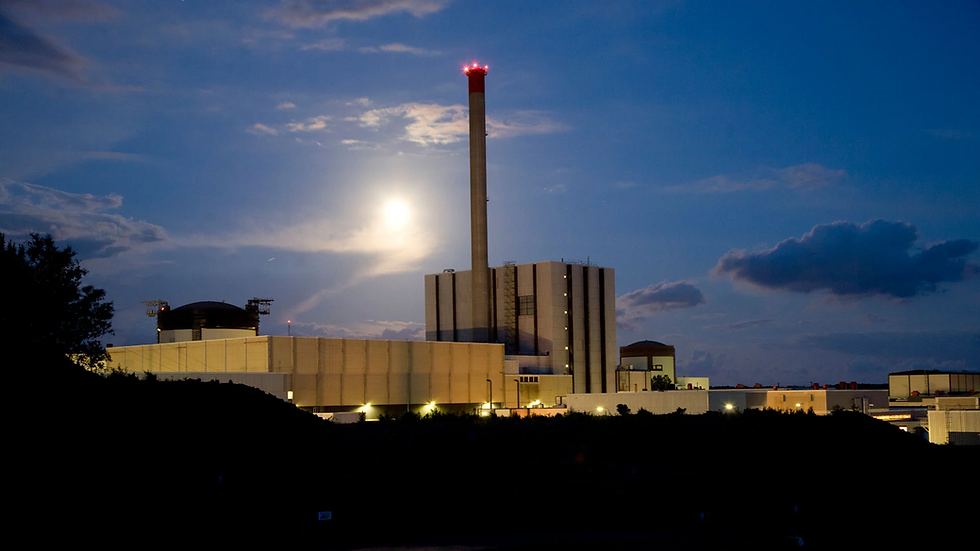The main purpose of the thesis report that I will share with you here is to perform new calculations to ensure the reliability of the existing nuclear power system and to examine the discrepancies between the new and previous calculations.

The task includes developing a model that allows for the interchangeability of parts to assess the compatibility of new components within the system. Calculations for this evaluation are conducted in accordance with the IEC 60909-0 standard, first edition.
Due to the forthcoming modernization of the electrical system in Ringhals (Nuclear Power Plant) units 3 and 4, it is necessary to perform new short-circuit current calculations and review previous ones.
The Ringhals nuclear power plant, located on the Värö Peninsula in Varberg Municipality, Sweden, about 65 km south of Gothenburg, is the country's second-largest power plant with a total power rating of 2,190 MWe. It currently operates two pressurized water reactors, R3 and R4. A third reactor, R2, also a pressurized water reactor, was permanently shut down in 2019, followed by the shutdown of the R1 boiling water reactor on December 31, 2020.
The calculations should encompass both systems in Ringhals 3 and 4 (R3 & R4). However, given the similarity between the systems, it has been decided to conduct all calculations exclusively for R4, rather than R3.
The R4 has been selected for its upcoming power upgrade, which will enhance its thermal power by 18.6% to 3300 MW. New calculations and safety analyses are prerequisites to ensure the upgrade is conducted securely.

Short-Circuit Current Theory
Short-circuit current calculations (SCCs) are among the most critical tasks in planning and operating power systems. While faults, or short-circuits, can be minimized through careful planning, design, and diligent maintenance and operation, they cannot be completely eliminated.
The configuration and coordination of switchgear, as well as the sizing, necessitate precise and comprehensive short-circuit current data. This is because switches and breakers must be engineered to safely and quickly interrupt short-circuits.
Another issue with short circuits is that the currents passing through the ground can induce voltages that disrupt nearby objects, such as pipelines, fences, and other metallic structures.
Short-circuits may induce mechanical oscillations in generators, potentially causing power system oscillations. This can create stability issues in power transfer and, in severe cases, result in a system blackout.
One last area to consider is that the installed equipment must be able to withstand the thermal and mechanical effects of short-circuit currents.

The methodologies of Self-Contained Systems (SCCs) have evolved and enhanced to more effectively fulfil industrial requirements.
Currently, a variety of SCC methods are available for use in different scenarios. The main improvements have been made to account for the effects of AC and DC decay caused by rotating machines.
These improvements range from straightforward adjustments of sequence impedances to intricate computations of sub-transient and transient impedances, as well as short-circuit time constants for rotating machinery.
How Does A Nuclear Power Plant Work?
Are you interested in how a nuclear power plant exactly works? We will take you through the whole process: from nuclear fission to electricity.
Nuclear Power: Should We Use More or Less?
We asked our audience what they thought about increasing our reliance on nuclear power, so in this video, we're examining the pros and cons of building more nuclear power plants.
Thesis Report
Document: | Short-circuit analysis of the onsite electric power system at Ringhals by Mikael Nilsson at CHALMERS UNIVERSITY OF TECHNOLOGY |
Format: | |
Size: | 2.65 MB |
Pages: | 77 |
Download: |



Comments